NEET Exam > NEET Notes > Physics Class 12 > Infographics: Electrostatic Potential and Capacitance
Infographics: Electrostatic Potential and Capacitance | Physics Class 12 - NEET PDF Download
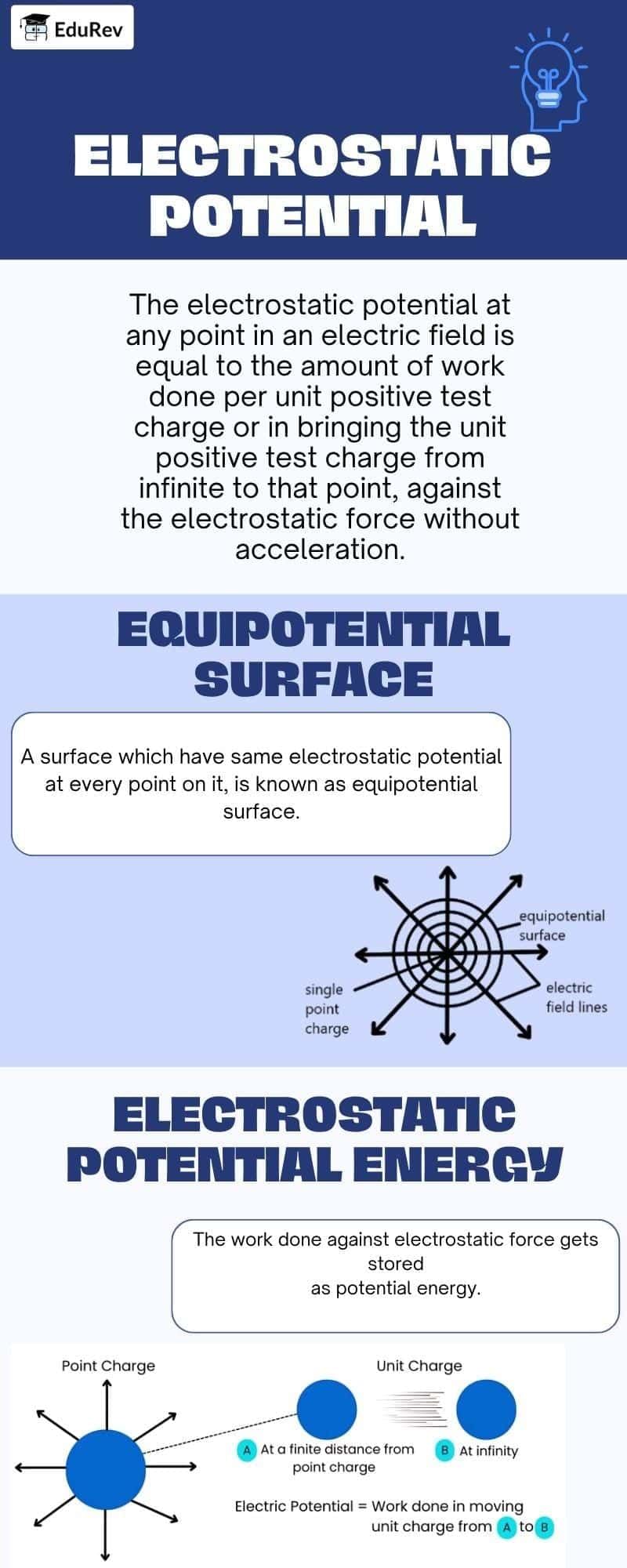
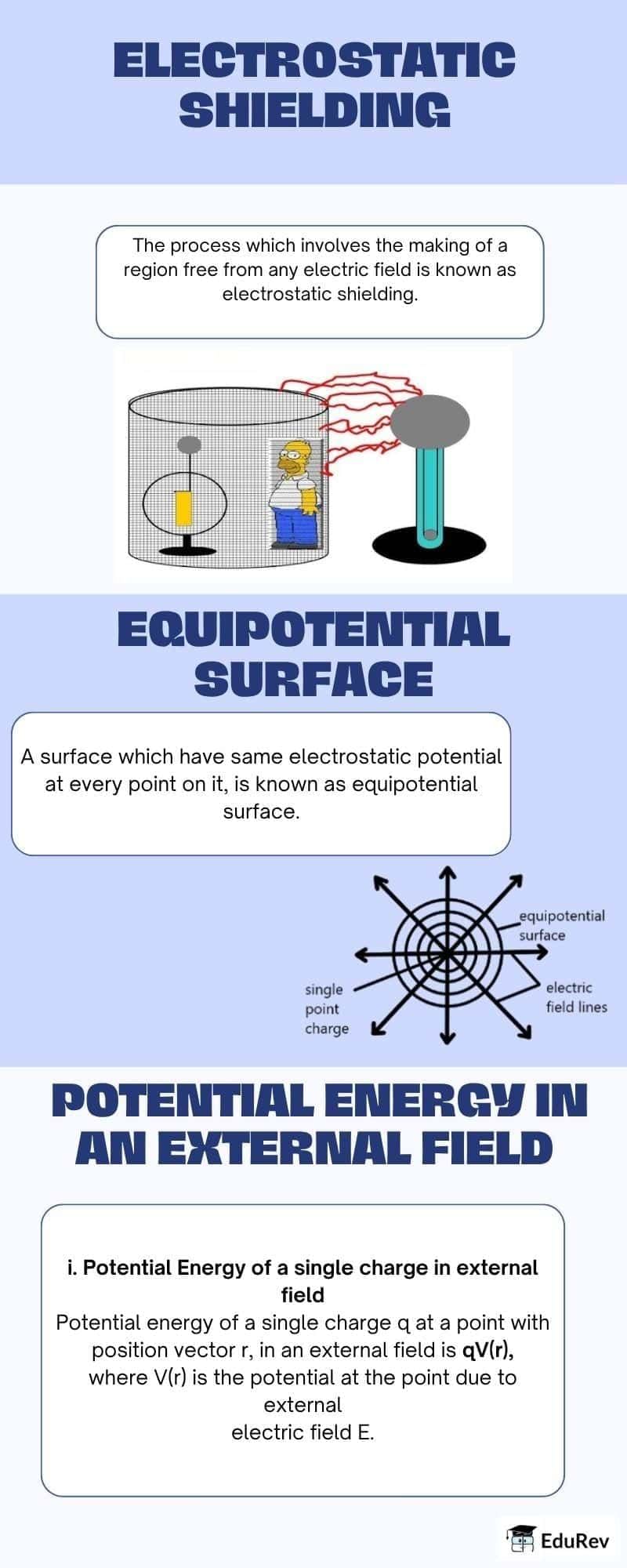
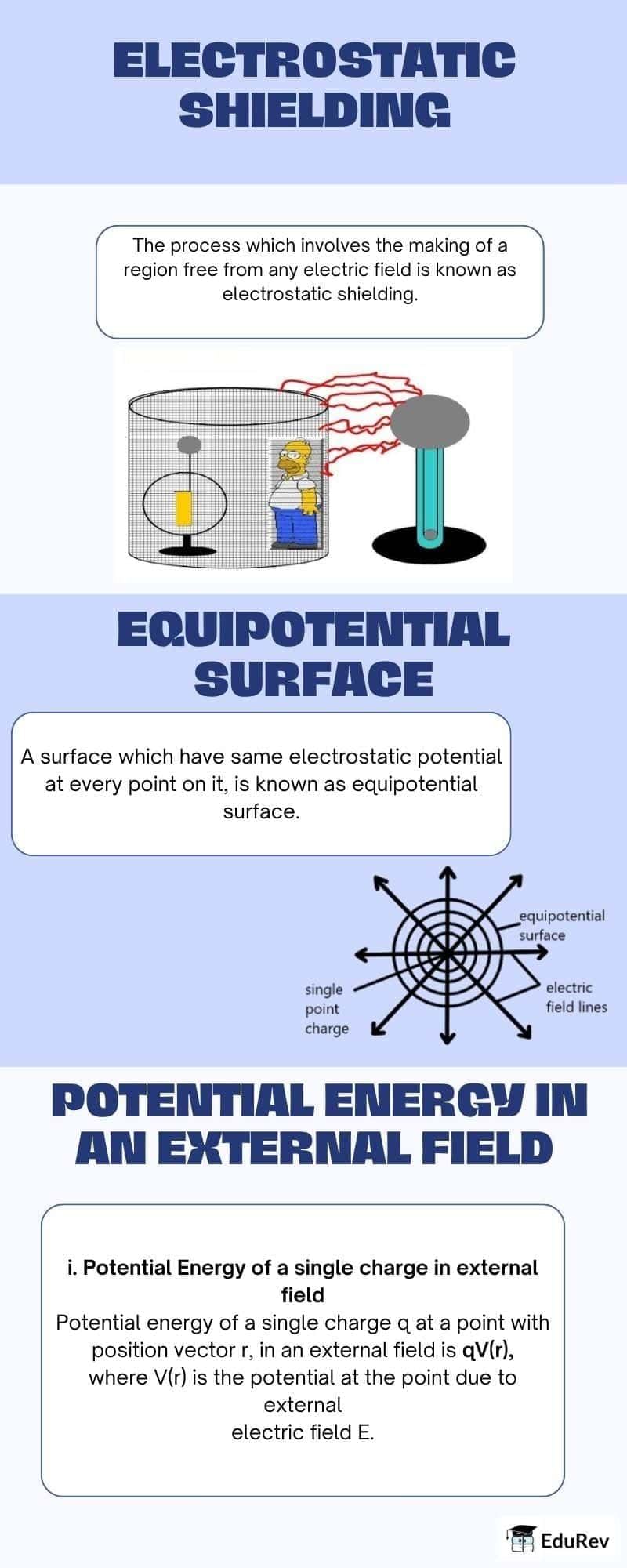
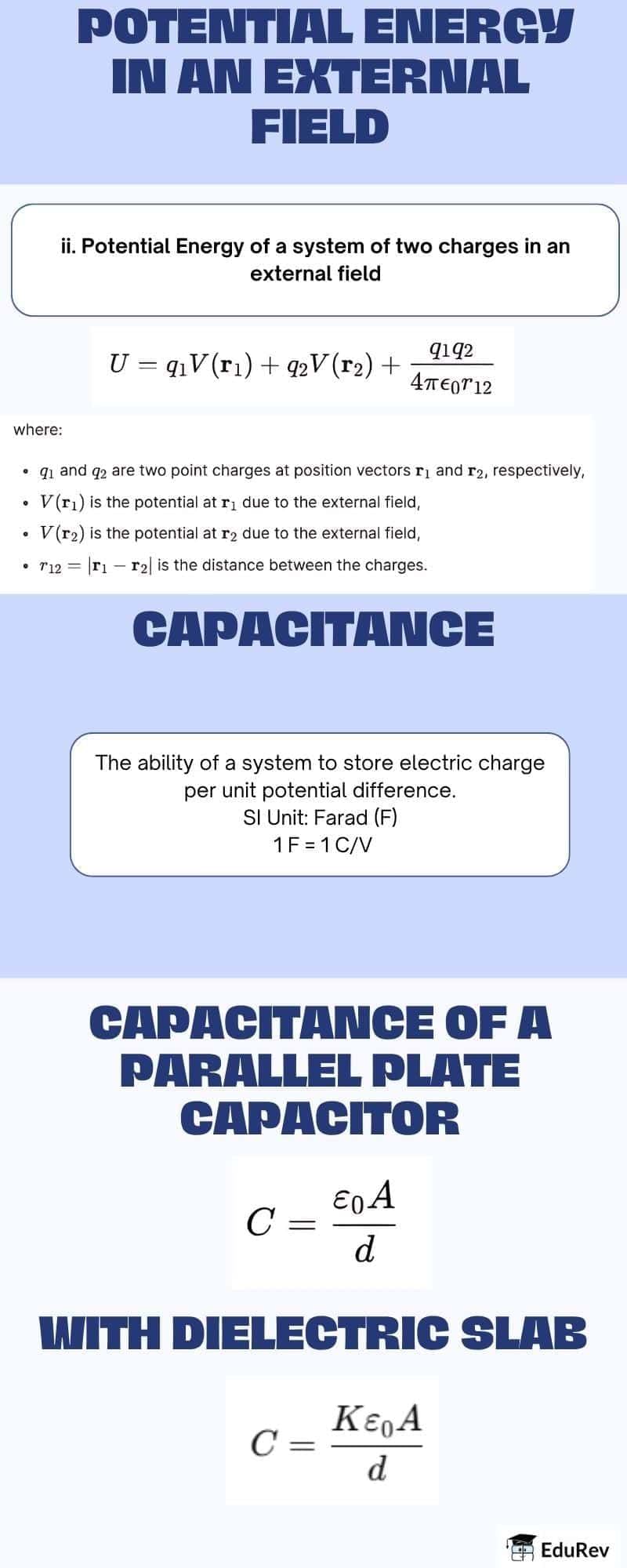
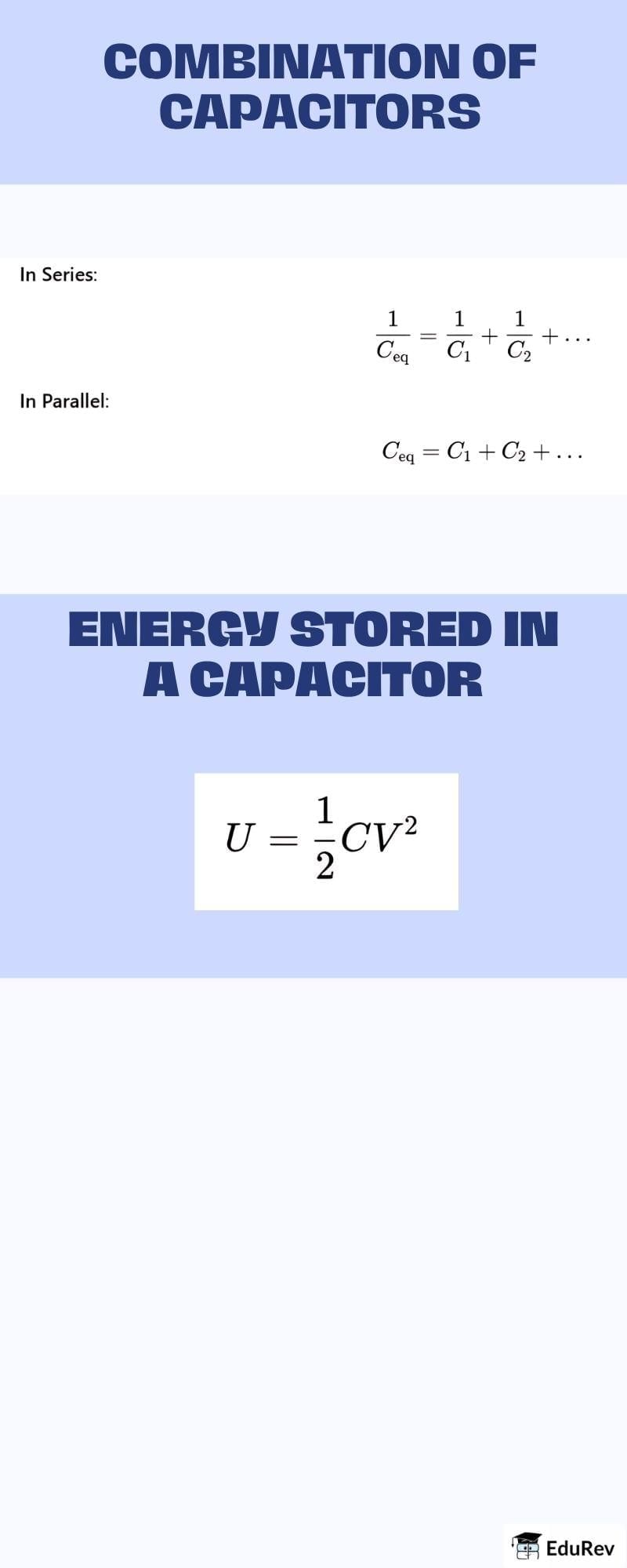
The document Infographics: Electrostatic Potential and Capacitance | Physics Class 12 - NEET is a part of the NEET Course Physics Class 12.
All you need of NEET at this link: NEET
|
74 videos|314 docs|88 tests
|
FAQs on Infographics: Electrostatic Potential and Capacitance - Physics Class 12 - NEET
| 1. What is electrostatic potential and how is it defined? |  |
Ans.Electrostatic potential is the work done per unit charge in bringing a positive test charge from infinity to a point in the electric field. It is defined mathematically as V = W/Q, where V is the electrostatic potential, W is the work done, and Q is the charge. The unit of electrostatic potential is the volt (V).
| 2. What factors affect the capacitance of a capacitor? |  |
Ans.The capacitance of a capacitor depends on three main factors: the area of the plates (A), the distance between the plates (d), and the dielectric material used between the plates. It is given by the formula C = ε(A/d), where C is the capacitance, ε is the permittivity of the dielectric material, A is the area of the plates, and d is the separation between them.
| 3. How does the dielectric material influence the capacitance of a capacitor? |  |
Ans.Dielectric materials increase the capacitance of a capacitor by reducing the electric field between the plates. This allows more charge to be stored for a given voltage. The capacitance with a dielectric is given by C = ε_r * C₀, where ε_r is the relative permittivity of the dielectric and C₀ is the capacitance without the dielectric.
| 4. What is the relationship between voltage, charge, and capacitance in a capacitor? |  |
Ans.The relationship between voltage (V), charge (Q), and capacitance (C) in a capacitor is described by the formula Q = C * V. This means that the charge stored in a capacitor is directly proportional to the voltage across it and its capacitance. If the capacitance or the voltage increases, the stored charge also increases.
| 5. Can you explain the concept of energy stored in a capacitor? |  |
Ans.The energy (U) stored in a capacitor can be calculated using the formula U = ½ C V², where U is the energy, C is the capacitance, and V is the voltage across the capacitor. This energy is stored in the electric field created between the plates of the capacitor and can be released when the capacitor discharges.
Related Searches





















